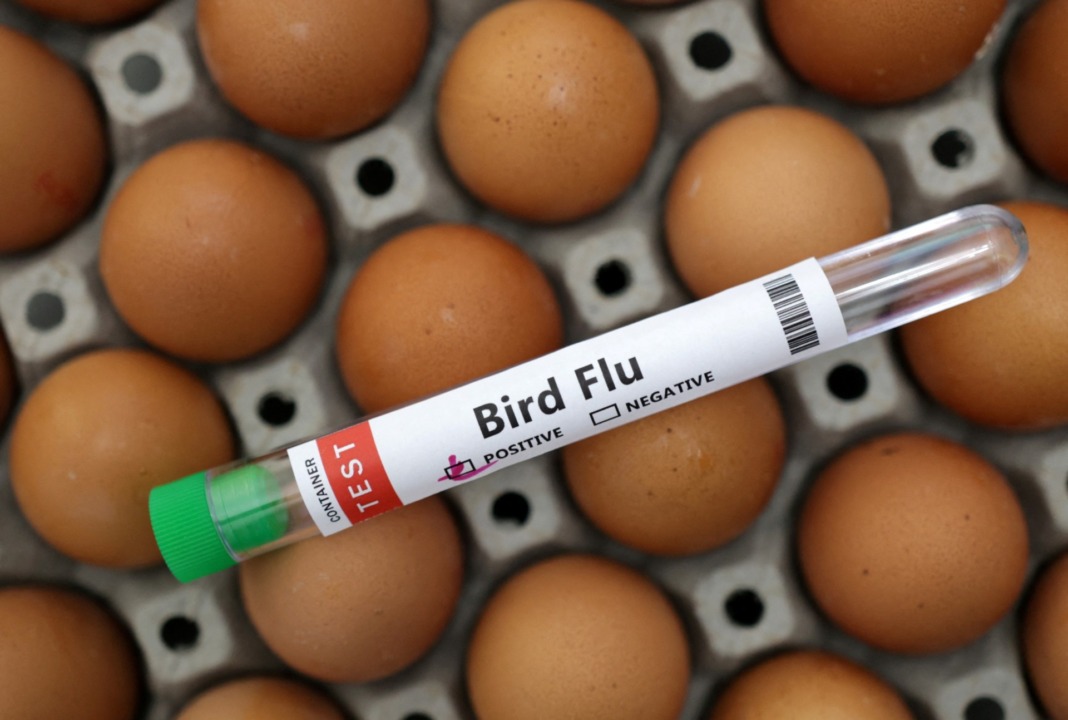JERAULD COUNTY, South Dakota – The United States has identified its first case of avian flu on a commercial poultry farm since April, sending ripples of concern throughout the poultry industry and potentially impacting the supply of poultry meat and eggs. The U.S. Department of Agriculture (USDA) confirmed the presence of the virus in a flock of 47,300 turkeys in Jerauld County, South Dakota.
Highly pathogenic avian influenza (HPAI), commonly known as avian flu, poses a significant threat to poultry farms. To prevent the spread of the virus, infected flocks are culled, which can lead to a tightening of the poultry meat and egg supply if further cases emerge.
Since 2022, HPAI has devastated the U.S. poultry industry, resulting in the loss of approximately 58.8 million chickens, turkeys, and other birds, according to USDA statistics. These losses have driven up prices for turkey meat and eggs, placing additional strain on consumers already grappling with inflationary pressures.
In response to these challenges, farmers have been diligently working to rebuild their poultry flocks, contributing to an increase in poultry supplies. However, the recent outbreak in Jerauld County serves as a stark reminder that the threat of HPAI still looms large over the industry.
Cal-Maine Foods (CALM.O), the largest egg producer in the United States, reported this week that the average price of conventional eggs has dropped by a staggering 48% compared to the previous year, reaching an affordable $1.24 per dozen during the quarter that ended on September 2, 2023. While this decrease in egg prices may be welcome news for consumers, it has had a significant impact on the company’s financial performance, with total net sales for the quarter falling by 30%, totaling $459.3 million.
Cal-Maine Foods issued a statement acknowledging the ongoing risk posed by HPAI: “HPAI is still present in the wild bird population, and the extent of possible future outbreaks, particularly during the upcoming fall migration season, cannot be predicted. Wild birds like ducks are known to transmit the virus.”
Prior to this week’s outbreak, HPAI infections in the U.S. were primarily limited to live bird markets and “non-poultry” birds since April, as documented by USDA records. The last known commercial farms affected in April were turkey farms located in South Dakota and North Dakota, as confirmed by records.
The poultry industry remains on high alert as it strives to strike a balance between ensuring the safety of poultry flocks and safeguarding the poultry supply chain against the persistent threat of avian flu. As the fall migration season approaches, vigilance and preparedness will be crucial to managing and mitigating any potential outbreaks.
Efforts to combat HPAI have evolved over the past year, with improved biosecurity measures and monitoring protocols in place. The USDA and local authorities are collaborating closely with poultry producers to detect and respond to outbreaks swiftly. The culling of affected flocks, while necessary for containment, is a painful process for farmers, often resulting in substantial financial losses.
Experts emphasize that preventing contact between domestic poultry and wild birds, which are natural carriers of the virus, remains a primary focus. Farmers are advised to maintain strict biosecurity measures, including secure enclosures and limited contact with outside personnel, to minimize the risk of infection.
While the chances of human transmission are generally low, there have been cases where avian flu strains like H5N1 and H7N9 have infected people, resulting in severe illness or even death. Health authorities closely monitor and investigate such cases, taking measures like contact tracing, isolation, and treatment to prevent the spread of the virus among humans. Public awareness campaigns are also launched to educate people on safe food handling practices, thoroughly cooking poultry, and avoiding contact with sick birds. Increased surveillance and testing near affected areas may be necessary during significant outbreaks, and ensuring access to antiviral medications and vaccines for healthcare workers and vulnerable populations is crucial to managing potential health risks associated with avian flu outbreaks.
While the detection of HPAI on a commercial poultry farm is concerning, it also underscores the importance of the ongoing research and development of effective vaccines and treatments for avian flu. A resilient poultry industry relies on the ability to combat and recover from disease outbreaks swiftly and efficiently.
The recent outbreak of avian flu in Jerauld County, South Dakota, has raised alarm bells within the U.S. poultry industry. Farmers, government agencies, and poultry producers are working collaboratively to mitigate the impact of HPAI on the supply chain and to safeguard both consumers and the poultry sector against the unpredictable nature of avian flu. As the fall migration season approaches, the industry remains vigilant and prepared to respond to potential future outbreaks, recognizing the critical importance of biosecurity measures and disease management strategies in the battle against avian flu.



